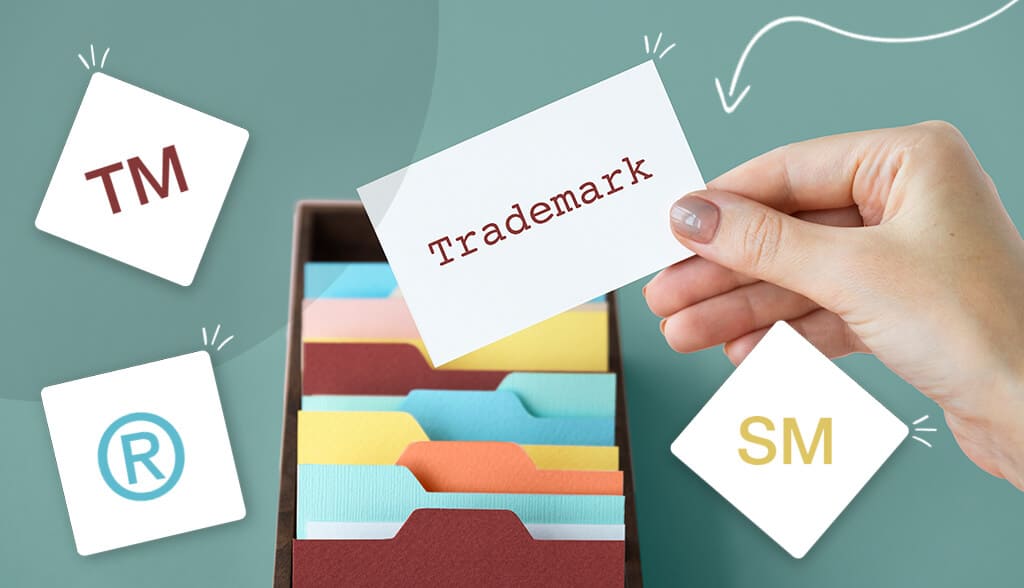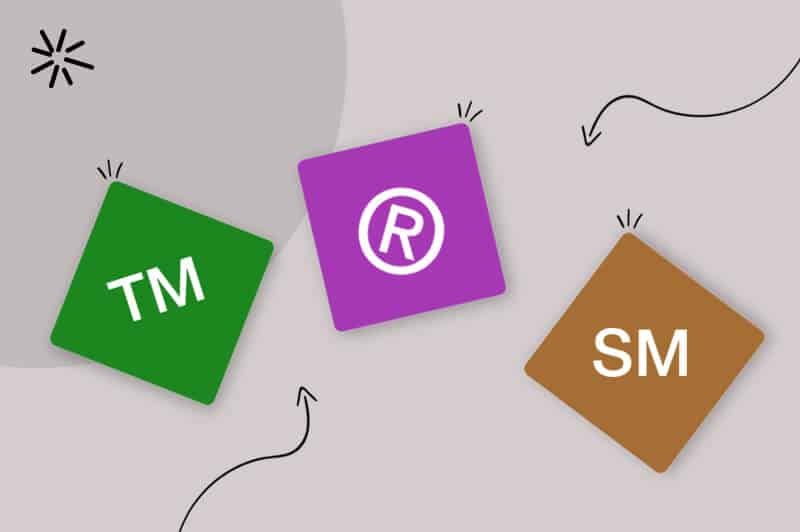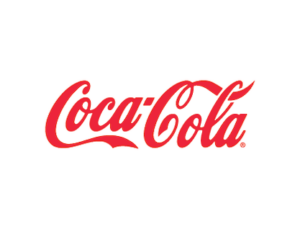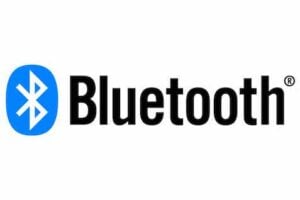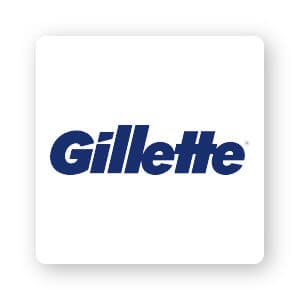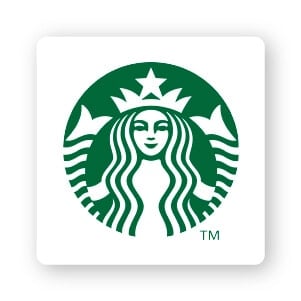How to Use a Trademark Symbol Properly
You can use your designated symbol anywhere around your trademark and there aren’t any specific requirements regarding the font or size. Still, there are certain guidelines most brands use.
The first thing you need to know is what the terms superscripts or subscripts mean.
A subscript is a character (in this case, your trademark symbol) positioned below your trademark. A superscript is placed above your trademark. Both are smaller than your trademark.
Symbol placement
As you now know, trademark symbols are either superscript or subscript (in the top right corner or bottom right corner) next to your trademark logo, name, or slogan.
For example:
For names, words, and phrases
Most brands with a trademark symbol representing names, words, and phrases—whether a TM, SM, or ®—place the symbol in the upper right corner after the mark.
For logos and designs
Most businesses with trademark symbols for logos place them in the lower right corner.
Frequency
The correct frequency of use is essential when using trademark symbols; overusing it can clutter your marketing strategies.
Since there’s no rule saying you must use your trademark symbol on all your trademark visuals, you can apply it as and when it suits.
For example, a good place to use your trademark symbol is when you first or most prominently use your trademarks, such as your primary marketing campaign, website homepage, or packaging.
Printed material
A single trademark symbol used with your primary mark on print materials, like flyers or short brochures, is sufficient.
On more extended materials, it’s better to use the designation (trademark symbol) at least once on every page your trademark appears.
Online materials
When using your trademark online, place the designation at least once per web page where you use your mark.
An excellent way to achieve this is to place the designation anywhere you repeat your marks, such as in a header or footer.
Social media
Using trademark symbols on social media is more relaxed.
Most brands and blogs use the trademark symbol only once in their bio/username and not in every tweet, status, or blog post to avoid over-formalizing and cluttering their social platforms.
3rd parties
When you allow 3rd parties to use your trademarks for marketing and sales purposes, you must ensure they use your trademark symbols correctly and per your branding strategy.
One way is to provide all 3rd party users with clear trademark symbol guidelines, such as where to position the mark, font size, color, and style.
And always monitor any 3rd party activities to ensure their product, service quality, and customer care is consistent with yours to avoid them tainting your good name because if they do you could lose your trademark rights.
